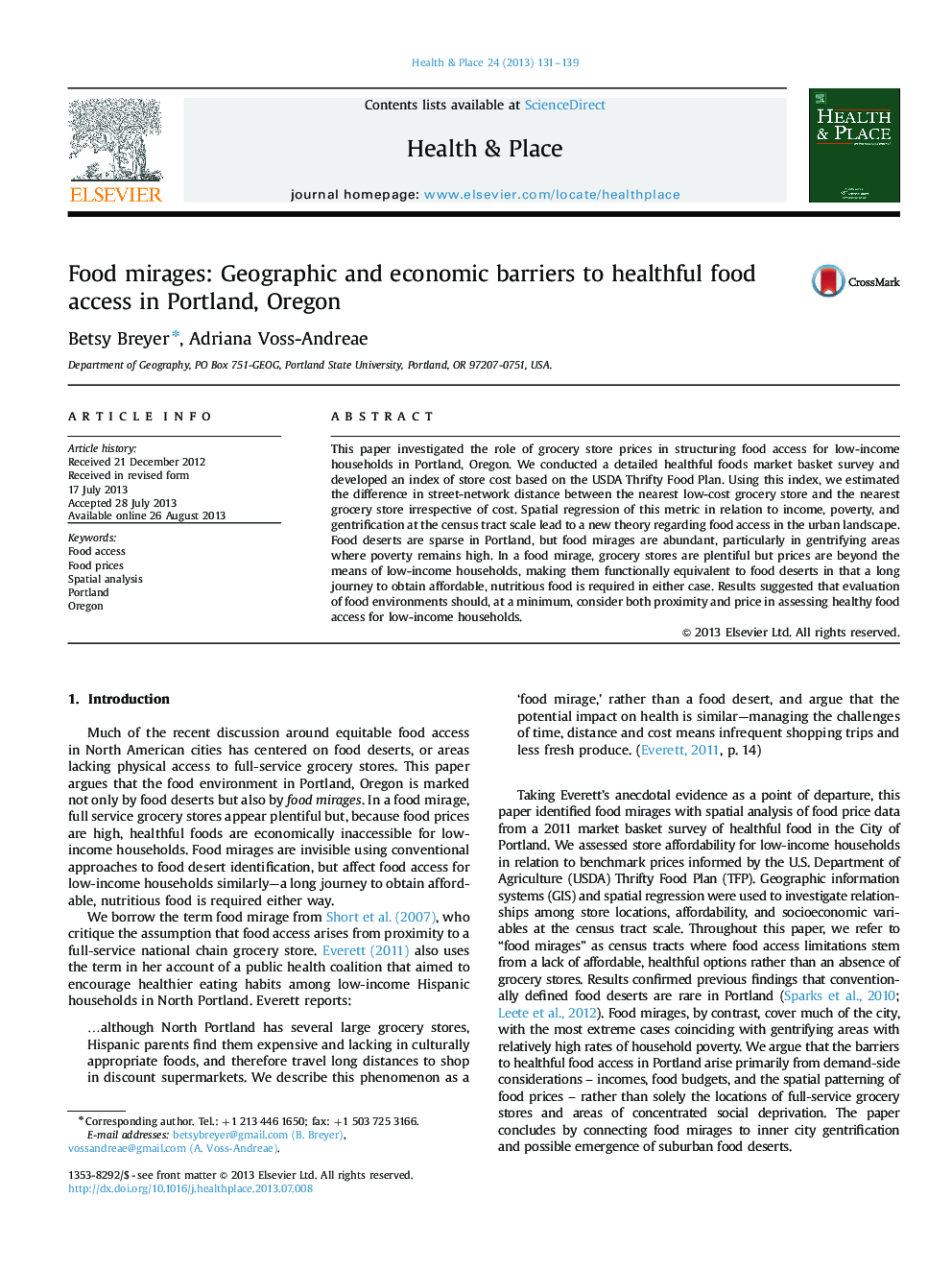| Article ID | Journal | Published Year | Pages | File Type |
|---|---|---|---|---|
| 7458940 | Health & Place | 2013 | 9 Pages |
Abstract
This paper investigated the role of grocery store prices in structuring food access for low-income households in Portland, Oregon. We conducted a detailed healthful foods market basket survey and developed an index of store cost based on the USDA Thrifty Food Plan. Using this index, we estimated the difference in street-network distance between the nearest low-cost grocery store and the nearest grocery store irrespective of cost. Spatial regression of this metric in relation to income, poverty, and gentrification at the census tract scale lead to a new theory regarding food access in the urban landscape. Food deserts are sparse in Portland, but food mirages are abundant, particularly in gentrifying areas where poverty remains high. In a food mirage, grocery stores are plentiful but prices are beyond the means of low-income households, making them functionally equivalent to food deserts in that a long journey to obtain affordable, nutritious food is required in either case. Results suggested that evaluation of food environments should, at a minimum, consider both proximity and price in assessing healthy food access for low-income households.
Related Topics
Health Sciences
Medicine and Dentistry
Public Health and Health Policy
Authors
Betsy Breyer, Adriana Voss-Andreae,
